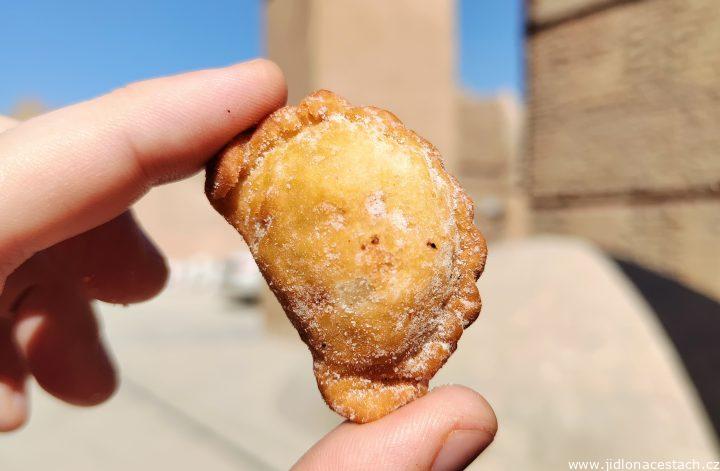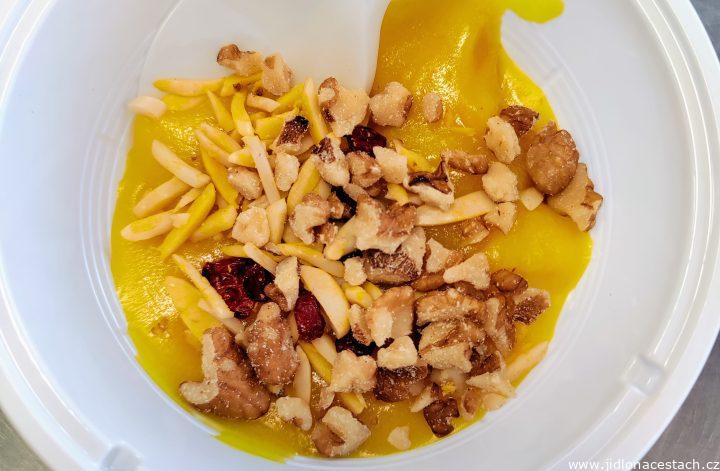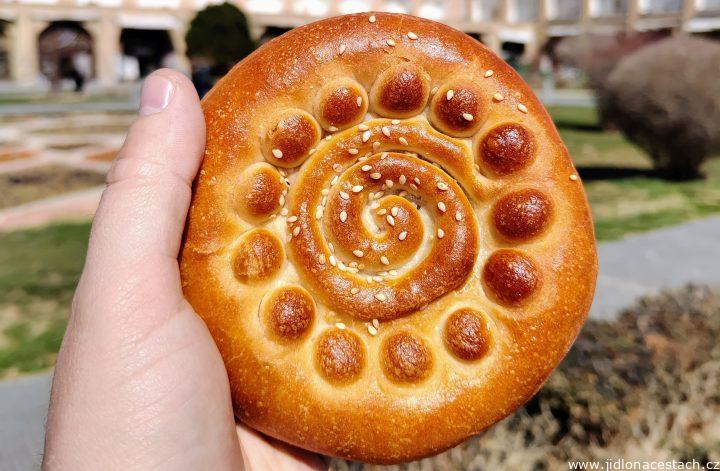Iran, a country with a rich history, fascinating culture, and above all, amazing culinary specialties. I almost always travel light, with just a small backpack. But that’s not possible with Iran. There are so many Iranian specialties that it’s impossible not to make an exception and travel with a suitcase (I only exceeded the allowed weight by 1 kg 😁). From Iran, I bring back lots of local delicacies, whether it’s the famous Iranian pistachios, freshly baked baklava, pistachio butter, or various types of sweet candies.
What are my recommendations for the best Iranian culinary souvenirs?
Gastronomic Souvenirs from Iran
Iranian Pistachios
Pistachios from Iran are among the best in the world. They are renowned for their quality, size, and intense flavor. Iran is one of the largest producers of pistachios globally. They are primarily grown in the regions of Rafsanjan and Kerman. Iranian pistachios taste fantastic, and the most common varieties you’ll find are plain, saffron-flavored, lightly salted, and salted. The most famous variety is the Akbari pistachio, which is the most expensive but also the best. When shopping, I recommend focusing exclusively on this variety.


Price for 1 kg of Iranian Akbari pistachios: 11,100,000 IRR (12.40 EUR)
Price for a package of shelled and chopped Iranian pistachios from a luxury brand: 1,000,000 IRR (1.10 EUR)
Iranian Pistachio Butter
If you love pistachios as much as I do, you will surely also love pistachio butter. Iranian pistachio butter is made from finely ground roasted pistachios. Its texture is creamy and thick, and its flavor is characteristically pistachio – sweet, slightly nutty, and very intense. High-quality Iranian pistachio butter contains no added additives. This time, I bought several jars of Shirreza butter directly from the producer in Yazd.

Price for a 150 g jar of Iranian pistachio butter: 2,340,000 IRR (2.60 EUR)
Iranian Baklava
Baklava is a traditional dessert popular not only in Turkey but throughout the Middle East and, of course, in Iran. Here, baklava is made to perfection, especially since one of its main ingredients is pistachios, which are of exceptional quality here. Iranian baklava is made from very thin layers of phyllo dough, layered with a mixture of crushed nuts, most often pistachios or almonds. Everything is then soaked in a sweet sugar syrup. For my family, freshly baked baklava is always the best gift. Plus, the price is truly affordable.

Price for a 750 g package of fresh Iranian baklava purchased directly from a bakery: 2,200,000 IRR (2.40 EUR)
Sweets from Yazd
Yazd is one of the most famous Iranian cities when it comes to traditional Iranian confections. Sweets from this desert city are renowned for their excellent taste and long history. Among the most famous are qottab – fried Iranian pastries filled with nuts, and loz – almond-based sweets. Sweets from Yazd are often packaged in decorative boxes. I brought back two packages of sweets from a renowned historical confectionery in Yazd. They taste amazing!



Price for 2 packages of sweets from Yazd: 6,000,000 IRR (6.80 EUR)
Iranian Dubai Chocolate
Dubai chocolate is currently one of the biggest culinary trends, making its way to nearly every food lover. It is extremely overpriced, and its quality often does not match the hype. However, if you want to try it, where better than in Iran – a country that produces premium pistachios and knows how to make excellent kadayif? These ingredients form the base of Dubai chocolate.
In Iran, I ended up buying two packages of Dubai chocolate in the form of small chocolate candies filled with pistachio and kadayif filling.
I must say, they are absolutely fantastic. For me, they are the biggest surprise among all the treats I brought back from Iran.

Price for a 200 g package of Dubai chocolate: 2,500,000 IRR (2.80 EUR)
Iranian Chocolate with Pistachios
While Iran is not known for its chocolate production like Switzerland, bringing at least one chocolate from every visited country is (almost) a must for me. Pistachios are widely used in Iranian cuisine, and combined with chocolate, they create a delicious flavor combination.

Price for a 50 g package of Iranian chocolate with pistachios: 150,000 IRR (0.15 EUR)
Iranian Milk Chocolate
The Iranian chocolate brand Özel is among the more premium ones. The producer prides itself on using the latest technologies. I haven’t tried it yet, but I’m curious.

Price for a 100 g package of Iranian milk chocolate: 400,000 IRR (0.45 EUR)
Iranian Saffron
Iran is the world’s largest producer of saffron, and its quality is among the best in the world. The dried red stigmas of saffron are used in cooking, confectionery, and traditional medicine. The most prized saffron is from the Khorasan province, known for its intense aroma and deep red color.

Price for 1 g of Iranian saffron: from 1,875,000 IRR (2.10 EUR)
Iranian Quince Jam
Quince jam is a traditional delicacy in Iran. Quinces are grown in large quantities here, with those from the area around Esfahan being especially famous. Thanks to their naturally sweet-and-sour flavor, quinces are perfect for making jams. Iranian quince jam is often delicately spiced and frequently contains saffron or rose water, adding a unique flavor.

Price for Iranian quince jam: 700,000 IRR (0.80 EUR)
Iranian Dates
Dates from Iran are considered some of the best in the world. Among the most popular varieties are “mazafati,” which are soft, juicy, and have an intense sweet flavor. “Piarom,” on the other hand, are drier with a caramel aroma. Kabkab is a premium Iranian date variety. These dates are mostly grown in Iran’s tropical regions. The ripe fruits range in color from light to dark brown and are typically longer than most Iranian varieties.

Iranian Hammered Copper Tray
Iran is renowned not only for its cuisine but also for its traditional handicrafts. This tray is hand-hammered and decorated with traditional Persian motifs. The tray is beautiful, ideal for serving tea, dried fruits, or sweets. But it will also make a lovely decoration. I bought the tray directly from the producer in Yazd. The price was calculated based on its weight (365 g). I didn’t haggle, so the price could have been even lower.

Price for an Iranian hammered copper tray: 6,000,000 IRR (6.80 EUR)
Iranian Jujube Cubes
Jujube cubes are made from the fruits of the jujube tree, which is widely grown in Iran. Jujube fruits have a sweet taste similar to dates, but they are less sweet and have a slightly sour undertone. They can be used as a healthier alternative to sugar.

Price for a package of jujube cubes from a luxury producer: 300,000 IRR (0.30 EUR)
Iranian Dried Figs
Iran is one of the world’s largest producers of dried figs. Figs from Iran are known for their sweet taste. Iranian figs are smaller than those from Egypt or Tunisia, mainly due to the variety and cultivation methods. Iran primarily produces the sabz and shahri varieties, which are naturally smaller. Iranian figs are hand-picked and sun-dried.

Price for a package of Iranian dried figs from a luxury producer: 300,000 IRR (0.30 EUR)
Iranian Dried Orange Peel
Sun-dried orange peel is a popular ingredient in traditional Iranian cuisine and confectionery. It is used as an additive in teas, desserts, and sweet sauces. The dried peel from Iranian oranges has an intense citrus aroma and flavor and is, of course, organic. I personally love dried orange peel, and I simply “snacked on” this one while working on my computer.

Price for a package of Iranian dried orange peel from a luxury producer: 400,000 IRR (0.50 EUR)
Iranian Dried Barberries
Barberries (“zereshk”) are an essential part of Iranian cuisine. The dried red berries have a sour taste and are used in dishes like “zereshk polo” (rice with barberries). Barberries are also widely used in confectionery and tea blends. At home, I love adding them to my oatmeal.

Price for a 100 g package of Iranian dried barberries: 300,000 IRR (0.30 EUR)
Iranian Khoosheh Biscuits
Iranian khoosheh biscuits have a simple yet delicious recipe based on basic ingredients. These are made from barley and contain nectar from mulberry fruits. The name “khoosheh” translates to “ear” (as in an ear of wheat), and each biscuit has an ear symbol on it. They are surprisingly firm, making them ideal for tea, which is very popular in Iran. They also make a perfect snack for the plane on a long journey home.


Price for a 200 g package of biscuits: 300,000 IRR (0.30 EUR)
Iranian Gaz
Gaz is a traditional Iranian confection originating from the city of Esfahan. It is made from sugar, egg whites, and pistachios. The best gaz contains 42% pistachios. It has a soft, slightly chewy texture and a sweet flavor. You can buy gaz individually wrapped or in gift boxes. The price varies depending on the producer and the percentage of pistachios.

Iranian Tea from Gilan
The Gilan region in northern Iran is famous for producing high-quality tea. Iranian tea from Gilan has a strong flavor, dark color, and rich aroma. In Iran, it is often sweetened with crystallized sugar nabat or sipped through sugar placed in the mouth. Tea is one of my favorite souvenirs.

Price for a 100 g package of loose Iranian tea from Gilan: 270,000 IRR (0.30 EUR)
Iranian Whey Kashk
Kashk is a traditional Iranian dairy product made from fermented whey. The liquid version has a thick, creamy consistency and a distinctive salty flavor. Kashk is also available in dried form. If you enjoy experimenting with flavors, I recommend trying this authentic Iranian product in your kitchen.

Price for a 230 g package of liquid kashk: 559,000 IRR (0.65 EUR)
Iranian Sohan
Sohan is a traditional Iranian crispy sweet made from wheat flour, butter, sugar, and saffron. It has a caramel-like flavor and is often topped with pistachios or almonds.

Price for a package of Iranian sohan in a metal box: 2,400,000 IRR (2.60 EUR)
Iranian Honey Sohan from Esfahan
This regional version of sohan, originating from the city of Esfahan, is another big surprise for me. Instead of sugar, honey is used, and the sohan sheets are as thin as paper, beautifully crispy, and generously topped with nuts. Highly recommended!


Price for a package of Iranian honey sohan from Esfahan: 3,600,000 IRR (4 EUR)
Iranian Crystallized Sugar Nabat
Crystallized sugar, called nabat in Iran, is a traditional sweetener and a typical souvenir. These sugar crystals are often made with the addition of saffron. Nabat is most commonly used to sweeten tea, where the sugar stick is dissolved directly in the hot tea. It has a mild sweet taste and an attractive appearance, making it a great gift.

Iranian Cotton Candy Pashmak
Pashmak is delicate Iranian cotton candy that resembles silky fibers. It is available in various flavors, most commonly pistachio or vanilla.

Iranian Candy
Iranians love sweets, so you’ll find plenty of candies in stores. Without much exploration, I chose licorice and mint-lemon candies, which are sugar-free. The taste is mild, and the licorice candies have a hint of salt, reminding me of Swedish salmiaklakrits candies.


Price for 2 packages of Iranian candies: 300,000 IRR (0.30 EUR)
What delicacies do you bring back from Iran?


